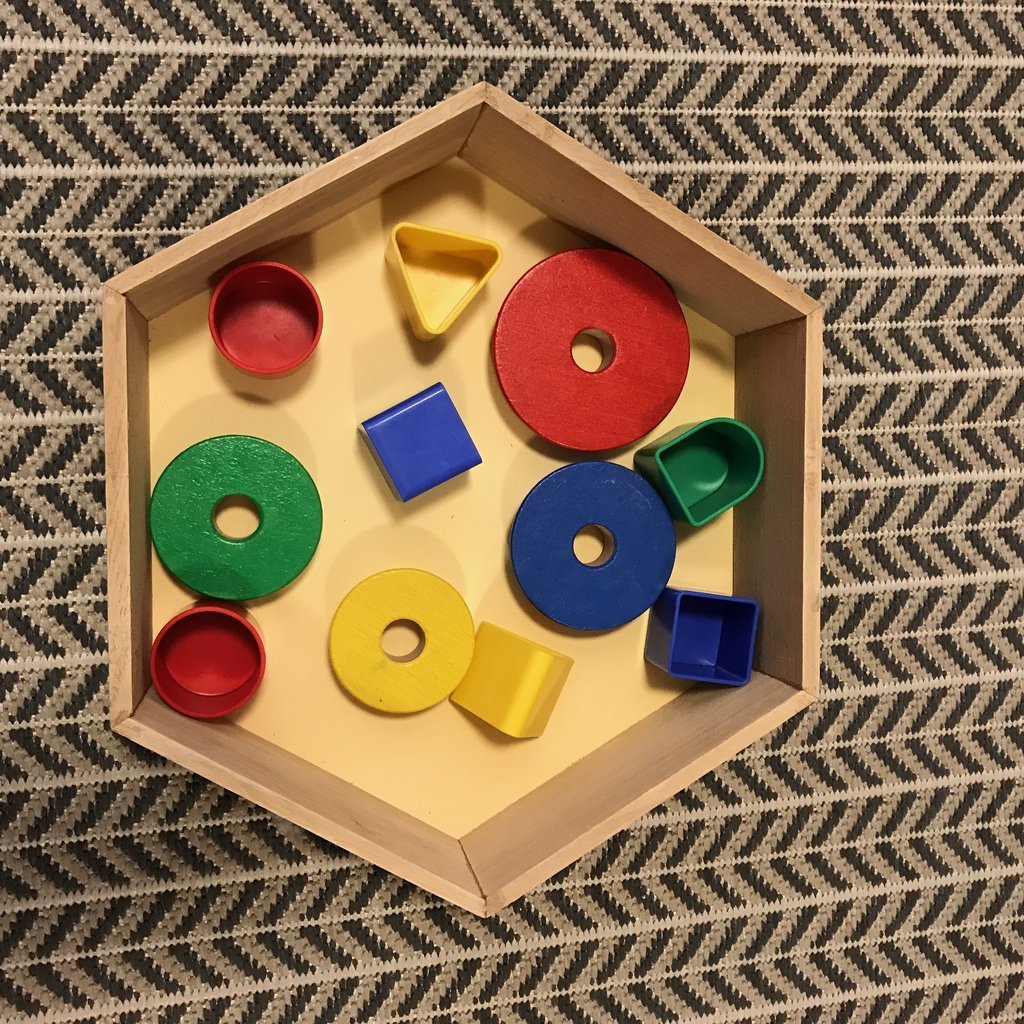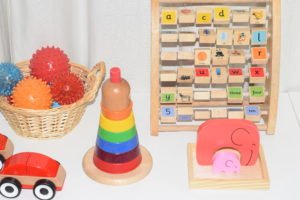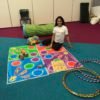
The sensorial activities allows the children to form new concepts through experience and exercise. Sensorial training should be carefully monitored so the children learn things one step at a time and at their own pace, gradually moving on to more complicated tasks. Where possible each sense is isolated to provide an intense learning experience. The Sensorial apparatus itself has a ‘control of error’ so the child can correct his own mistakes. This promotes ‘auto-education’ which is more effective than being taught by another person. Where possible the exercises are individual because each child is at a different level of development and he progresses at a different rate. The materials encourage the child to work in an ordered way because of the way they are designed and because of the way they are presented.
Once the teacher has presented a piece of material, the child can be left to learn from the material itself i.e. the teachers’ activity is minimal and the child’s rate of activity is at maximum.The use of the materials for the designated purpose provide valuable experiences which should make a good contribution to the eventual development of logical thinking.
The design and presentation of the materials encourage the child to be self-disciplined. The satisfactory completion of a task serves as a reward for the child and he is, therefore encouraged to engage in, concentrate upon, and complete the activity again. Once he has done this he has disciplined himself to complete a task. Many of the materials help develop the child’s muscular coordination and some prepare the muscles for later specific tasks.

How are sensorial exercises provided?
The sensorial activities help the child to sort out the many and varied impressions give by the senses.
- Develop: To develop the child’s senses through exercises that gradually build up perceptual challenges working from simple through to complex presentations e.g. use of four-cylinder blocks completely.
- Order: The child’s sensory perceptions are given order because the activities identify a single perceptual quality, disclose a range of discreet differences in the quality and explore patterns in the differences Ex1 one cylinder block, all the same colour but vary in height i.e. one perception only; Ex2 colour box – all the same size but colour is different; Ex3 rods – all same colour and thickness but length is different, ten decimetres each time.
- Broaden: The child’s perception of the world is broadened when the sensorial activities awaken certain sense experiences that were previously unexplored, e.g. different smells, different shades of colour, different tones on the bells.
- Refinement: The sensorial activities refine the sense perception because they allow the child to experience and concentrate on particular qualities in perfect clarity and isolation, e.g. Dimension is isolated in the cylinder blocks and the colour is isolated in the colour boxes.
“The first of the child’s organs to begin functioning are his senses, they are instruments by which we lay hold of impressions and these in the child’s case have to become a part of his personality”. The Absorbent Mind.


